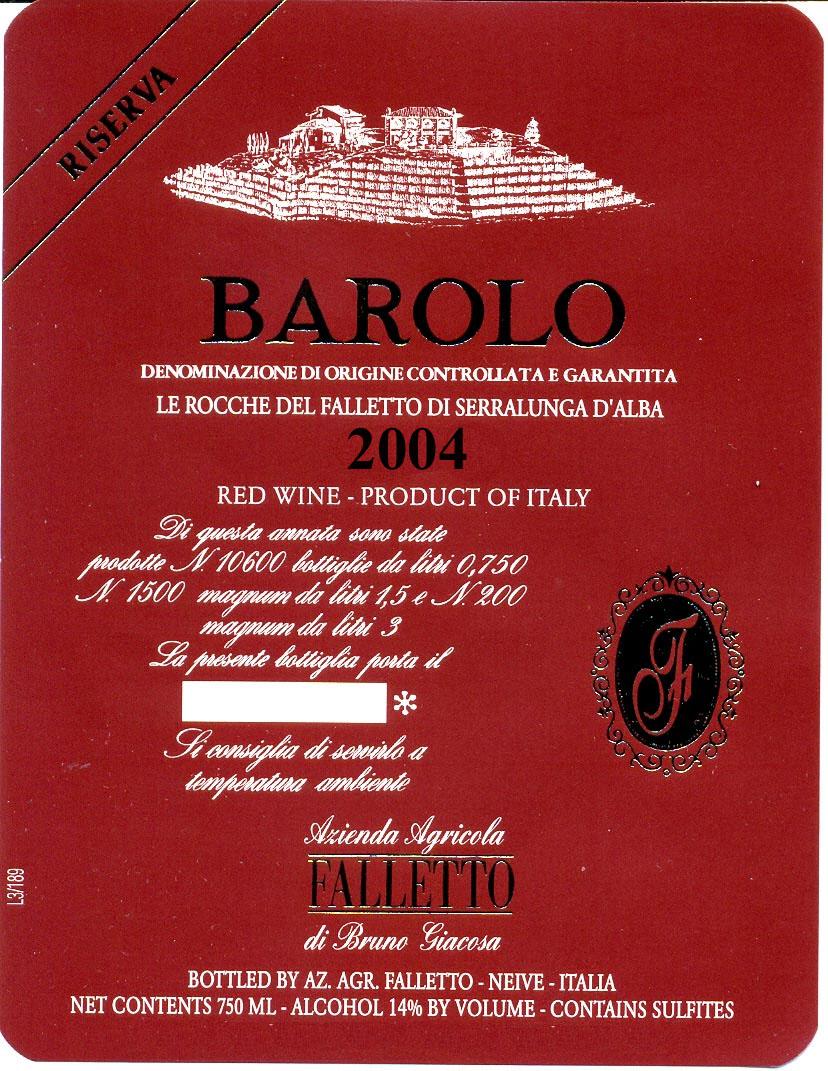2004 Barolo Nebbiolo
The Bruno Giacosa Riserva, a remarkable Nebbiolo from the esteemed Barolo region, showcases an enchanting deep red hue that allures the eye. This vintage, dating back to 2004, displays a full-bodied structure, with high acidity that invigorates the palate. Its prominent fruit intensity reveals luscious flavors of dark cherry, plum, and hints of dried rose petals, all intertwined with an elegant layer of earthy notes and a whisper of spice. The tannins in this wine are structured and powerful, providing a solid backbone that leads to a lingering finish. A beautifully crafted representation of Barolo, this wine is both memorable and a true testament to its noble origins.
The Bruno Giacosa Riserva, a remarkable Nebbiolo from the esteemed Barolo region, showcases an enchanting deep red hue that allures the eye. This vintage, dating back to 2004, displays a full-bodied structure, with high acidity that invigorates the palate. Its prominent fruit intensity reveals luscious flavors of dark cherry, plum, and hints of dried rose petals, all intertwined with an elegant layer of earthy notes and a whisper of spice. The tannins in this wine are structured and powerful, providing a solid backbone that leads to a lingering finish. A beautifully crafted representation of Barolo, this wine is both memorable and a true testament to its noble origins.




